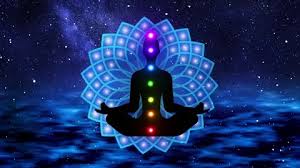
Overview
Chakras are energy centers in the body that play a vital role in our physical, emotional, and spiritual well-being. Originating from ancient Indian spiritual practices, the chakra system is integral to yoga and Ayurveda. In this exploration, we will delve into the seven primary chakras, their significance, and ways to balance them.
The Chakra System
The word “chakra” comes from the Sanskrit term meaning “wheel” or “disk,” symbolizing the spinning energy centers within our bodies. According to tradition, seven main chakras are aligned along the spine, each associated with different physical, emotional, and spiritual aspects of our lives. These chakras can influence our health and well-being, and when they are blocked or unbalanced, it can lead to various issues.
The Seven Chakras
- Root Chakra (Muladhara))
Location: Base of the spine
Color: Red
Element: Earth
Significance: The root chakra is linked to our sense of safety, security, and grounding. It governs our basic needs such as food, shelter, and stability. When balanced, we feel secure and connected to the physical world. An imbalanced root chakra can lead to fear, anxiety, and instability.
Balancing Techniques: Grounding exercises, spending time in nature, yoga poses like Mountain and Warrior, and using crystals like red jasper or garnet can help. - Sacral Chakra (Svadhisthana)
Location: Lower abdomen
Color: Orange
Element: Water
Significance: This chakra is associated with creativity, sexuality, and emotional connection. It influences our ability to experience pleasure and embrace change. A balanced sacral chakra fosters creativity and healthy relationships, while an imbalance may lead to emotional instability or creative blocks.
Balancing Techniques: Engaging in creative activities, practicing hip-opening yoga poses, and using essential oils like orange or sandalwood can promote balance. - Solar Plexus Chakra (Manipura)
Location: Upper abdomen
Color: Yellow
Element: Fire
Significance: The solar plexus chakra is the center of personal power, confidence, and decision-making. It influences our self-esteem and how we assert ourselves in the world. A balanced solar plexus chakra enables us to feel confident and in control, while an imbalanced one can lead to issues like low self-esteem or excessive control.
Balancing Techniques: Practicing assertiveness, engaging in physical activity, and using crystals like citrine or tiger’s eye can help strengthen this chakra. - Heart Chakra (Anahata)
Location: Center of the chest
Color: Green
Element: Air
Significance: The heart chakra is the bridge between the lower and upper chakras and is associated with love, compassion, and emotional balance. It allows us to connect with others and ourselves on a deep level. A balanced heart chakra fosters healthy relationships and self-love, while an imbalanced one can result in feelings of isolation or fear of intimacy.
Balancing Techniques: This chakra can be supported by practicing self-love and compassion, engaging in acts of kindness, and using green stones like rose quartz or emerald. - Throat Chakra (Vishuddha)
Location: Throat
Color: Blue
Element: Ether
Significance: The throat chakra governs communication, self-expression, and truth. It allows us to express our thoughts and feelings authentically. A balanced throat chakra fosters clear communication and honesty, while an imbalanced one may lead to difficulty in expressing oneself or fear of speaking up.
Balancing Techniques: Singing, journaling, or practicing public speaking, along with using crystals like lapis lazuli or aquamarine, can help balance this chakra. - Third Eye Chakra (Ajna)
Location: Forehead, between the eyes
Color: Indigo
Element: Light
Significance: The third eye chakra is associated with intuition, insight, and spiritual awareness. It helps us perceive beyond the physical realm and connect with our inner wisdom. A balanced third eye chakra enhances our ability to trust our intuition, while an imbalanced one can lead to confusion or a lack of direction.
Balancing Techniques: Meditation, visualization, and using crystals like amethyst or lapis lazuli can enhance this chakra’s function. - Crown Chakra (Sahasrara)
Location: Top of the head
Color: Violet or white
Element: Thought
Significance: The crown chakra is the center of spiritual connection and enlightenment. It connects us to higher consciousness and universal energy. A balanced crown chakra fosters spiritual awareness and a sense of oneness with the universe, while an imbalanced one can lead to spiritual disconnection or lack of purpose.
Conclusion
Learn the art of chakras and how it can help the mind, body, and soul unite as one. These centers of energy will aid in the quest for self, the exploration of spirituality, and relational health. Achieve equilibrium, clearness, and attunement using easy yet effective techniques, and let your inner light shine.
You may also like to read: Education and mental health: A dual approach
